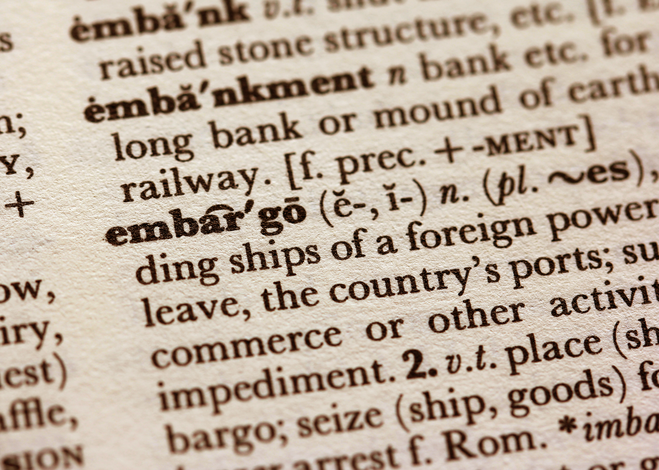
You have big news. You’re celebrating a retail expansion, welcoming new leadership, launching a new product, or announcing a new partnership or exciting rebrand. You’re ready to announce that news, but you want to be careful about how it’s rolled out, ensuring you have some control over the news cycle. While you can’t control what journalists write about your news, you can have some control over how it’s shared. So, what’s the difference between exclusives and embargoes? And how can you use the two techniques to best tell your brand’s story?
First off, let’s make sure we get our definitions all set and clear up any confusion about what these two terms mean.
What is an exclusive?
An exclusive is offered to a select journalist or outlet. In this case, the journalist or editor confirms that they’re interested in landing the exclusive and the brand, in turn, does not share the news with any other media members until after the journalist with the exclusive publishes their piece. Being first with news is important, so journalists value exclusives. The upside for you is that you’re able to take your news to your dream publication and try to coax them to cover it by offering the exclusive, giving them the ability to be the ones to break the news.
What is an embargo?
An embargo is sent around more widely, offered to many journalists rather than just one. Embargoes require you to set a day and time for them to lift, meaning that you can control when the news breaks and strategically roll it out to align with your goals and other promotions you have planned. When putting an embargo on your news, you want to make sure it’s very clear that there is an embargo in place. Put “EMBARGO” or similar in the subject line of your pitch, and bold any information about what’s embargoed and when it lifts. This lets journalists know that they’re not to publish any stories related to your news until that date and time.
What's the difference between exclusives and embargoes?
While exclusives can make a big splash, offering embargoed news can result in more a flood of stories, versus just one big feature. Ultimately, choosing if it’s better to offer an exclusive or an embargo can depend on your goals—and your news. Often, a pitch for an exclusive will be better received if it’s a scoop, something that journalists would be clamoring to cover. Run-of-the-mill news might be better shared by going the embargo route instead.
Whether you’re opting to pitch an exclusive story or an embargoed one, clearly spelling out all of the details and parameters of whatever you’re offering is key. Just like with an embargo, placing “EXCLUSIVE” in the subject line can be more than just a way to catch a journalist’s eye, it can also help them clearly understand the type of story you’re trying to pitch them. Similarly, if you have a story that’s partially embargoed—say, you’re announcing a big new initiative, but you want the news of your celebrity partner’s involvement embargoed until a certain date and time—make sure to clearly note what’s restricted and what’s fair game from the get-go.
How can Press Hook simplify the embargo process?
Sending out an embargoed press release? Press Hook has a feature to help you get your news out without breaking the embargo. When adding your press release to the Press Hook platform, simply enter your embargo date, ensuring that your press release will only appear for media users who are approved and logged into the platform. They’ll be able to get a jump start on any stories they’d like to write surrounding your news without you needing to email them directly. Once your specified embargo has lifted, your press release will then be visible to all users on the Press Hook newsfeed.
Want to learn more about how Press Hook can help you refine your media relations experience? Book a call with a member of our team here.








